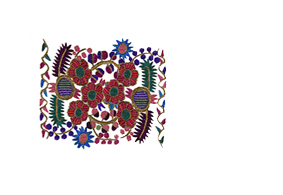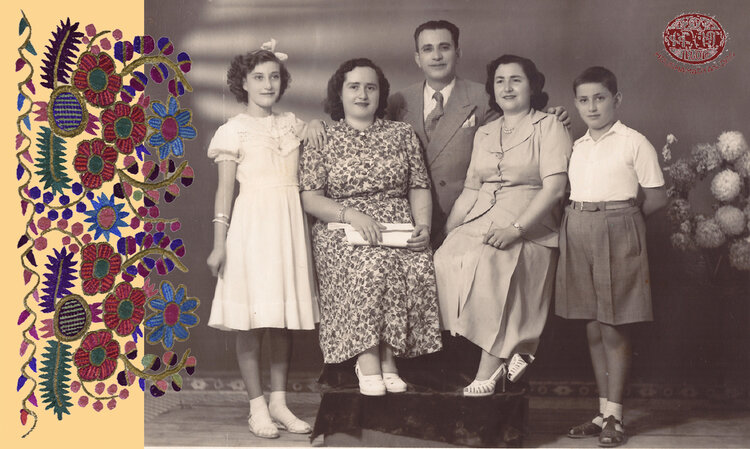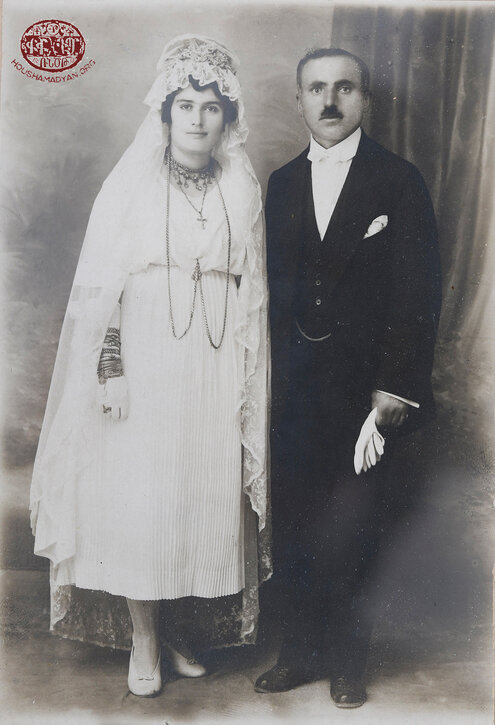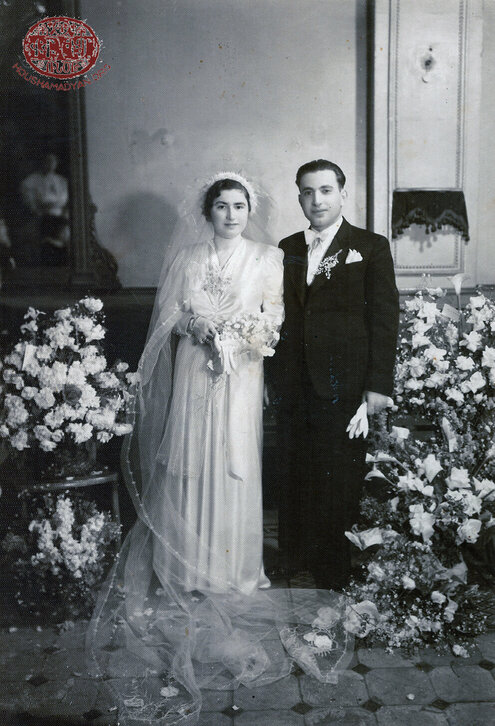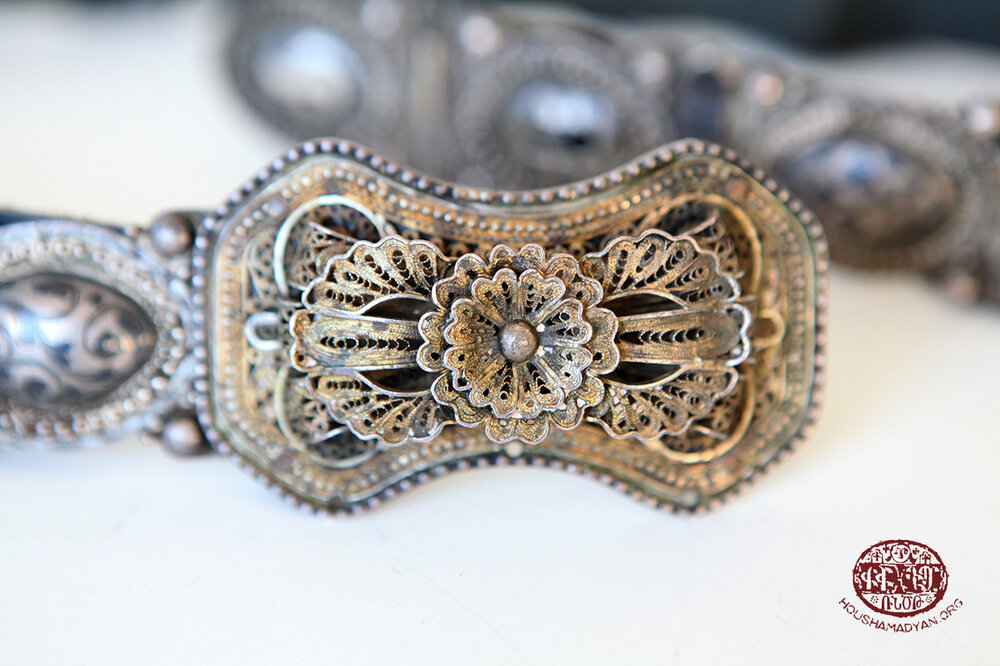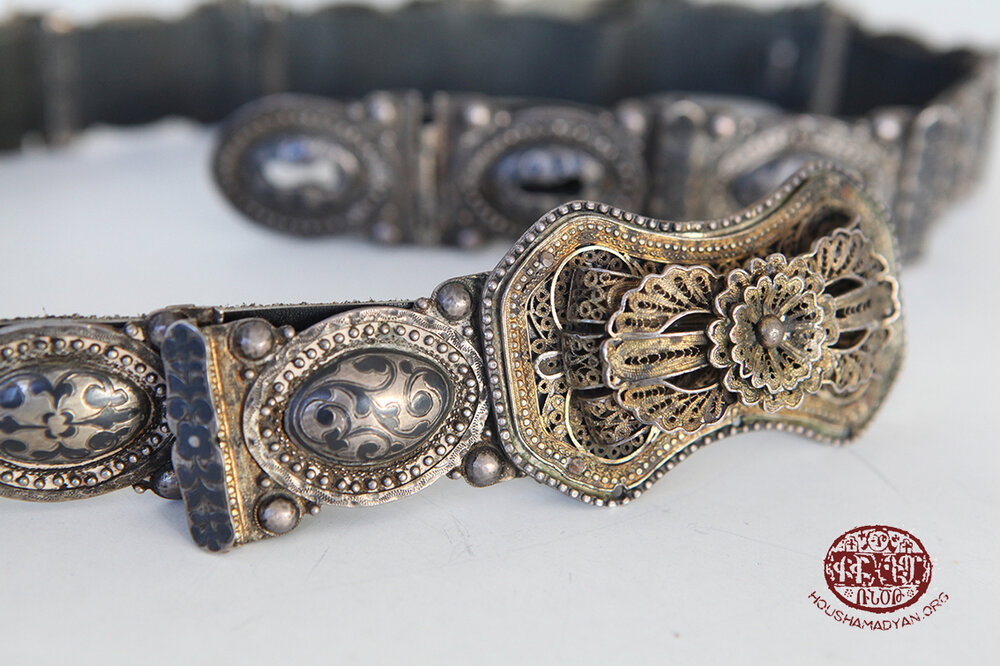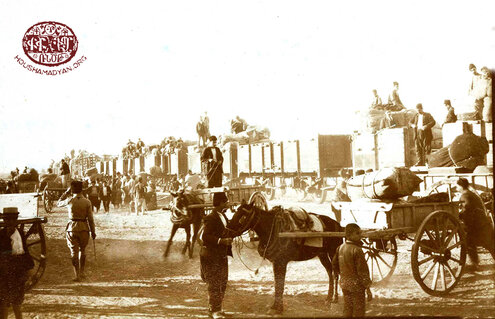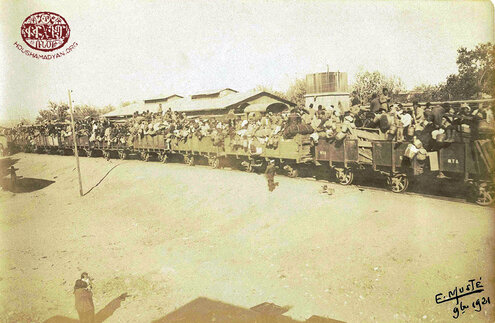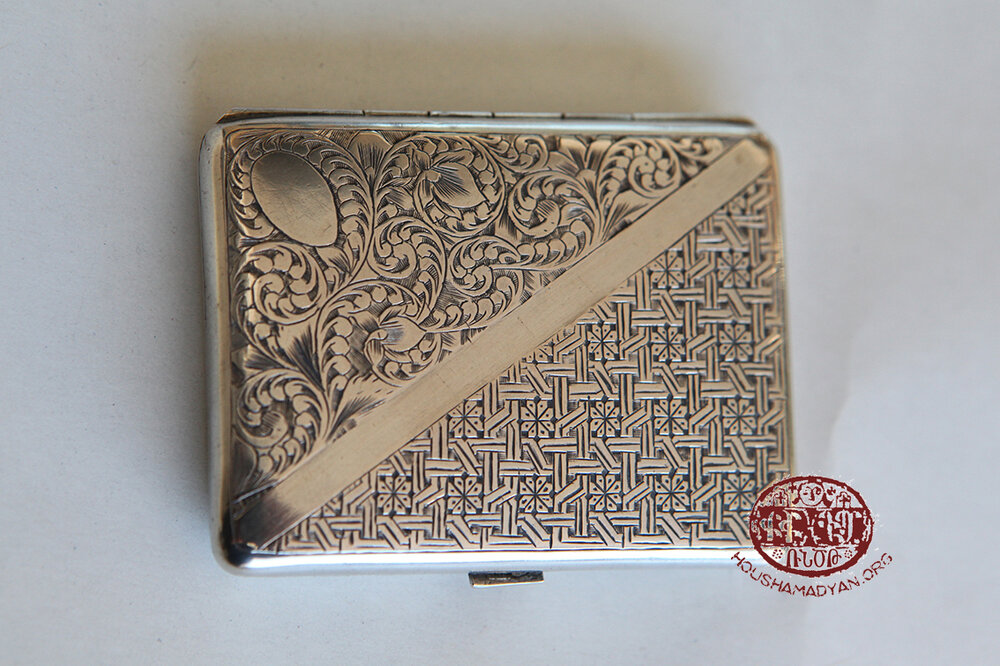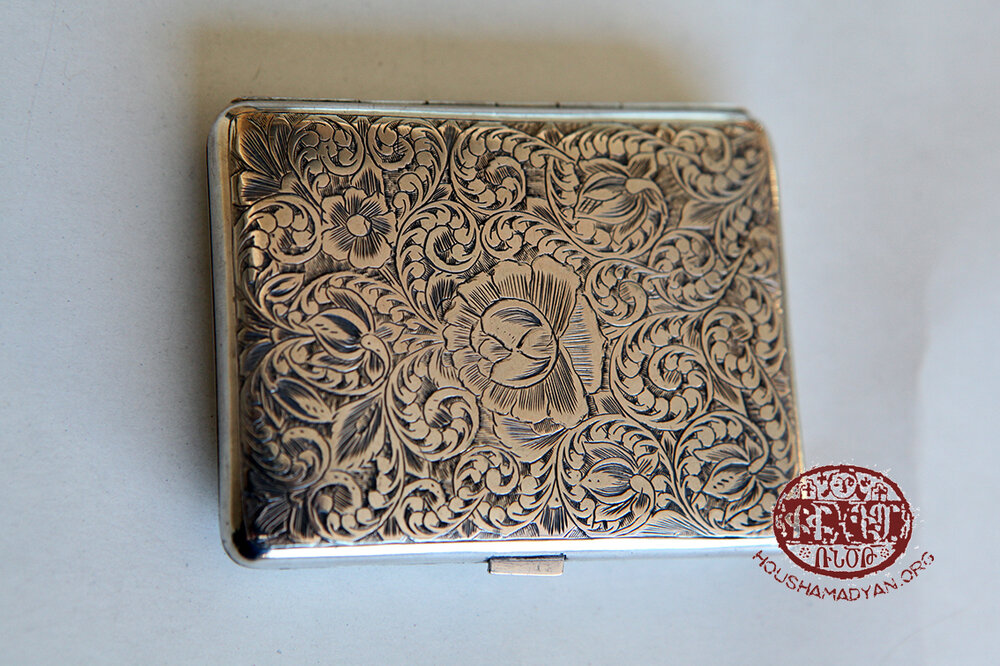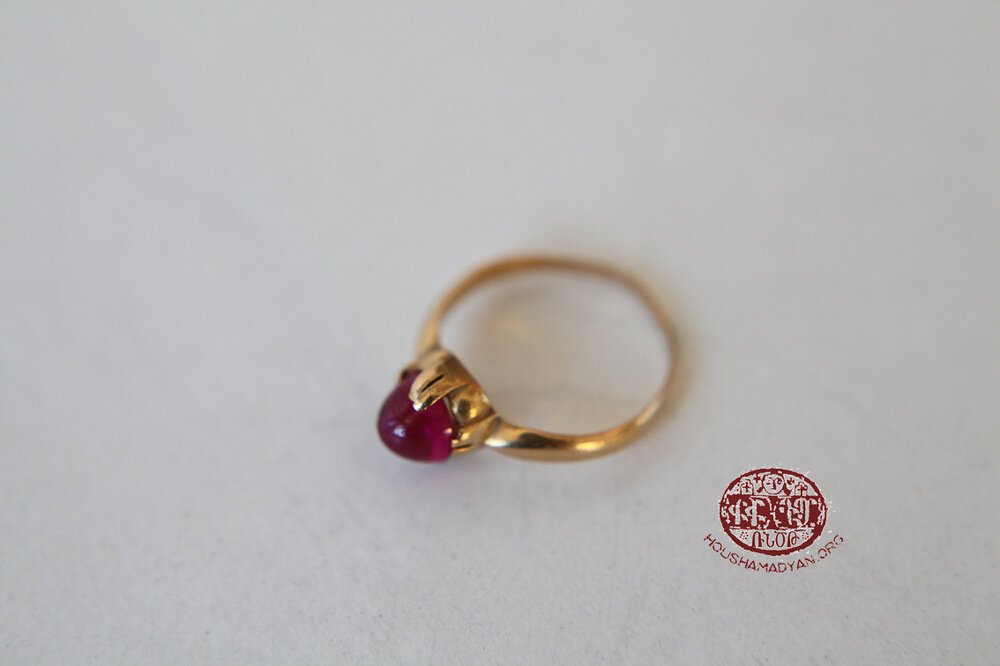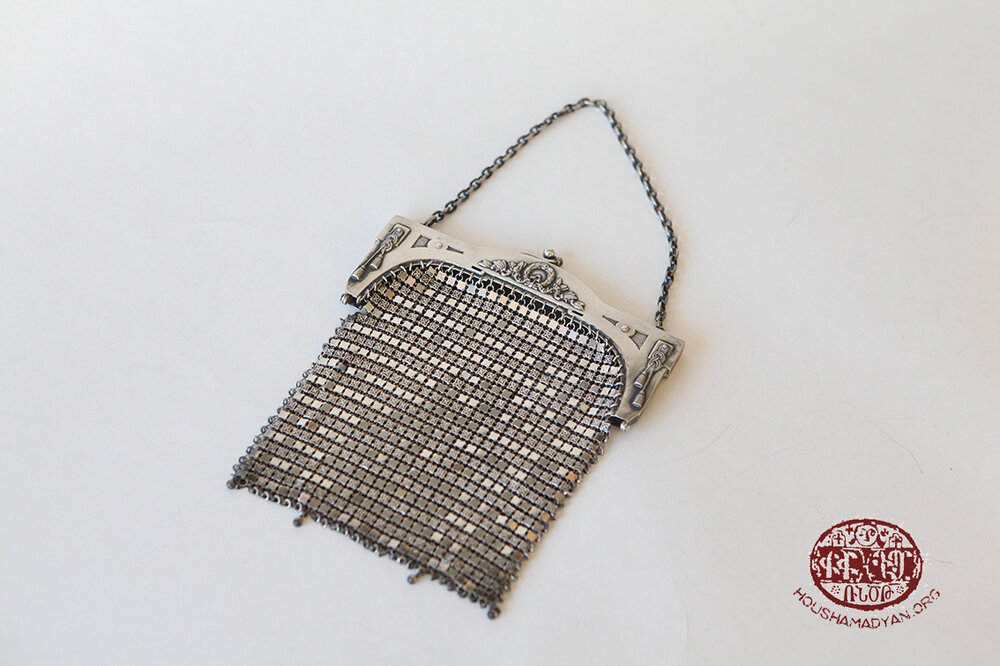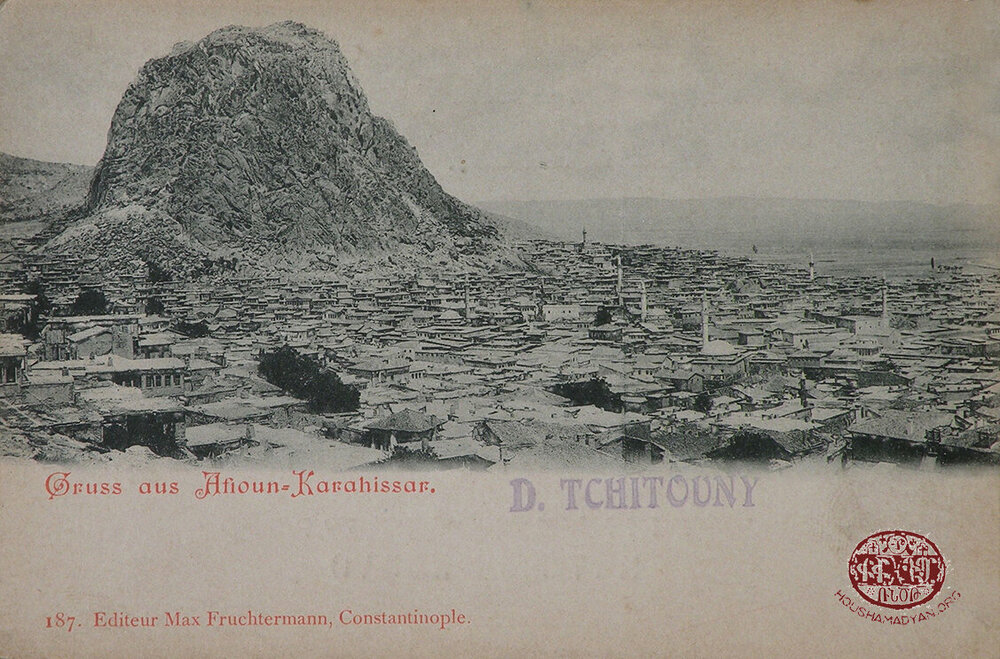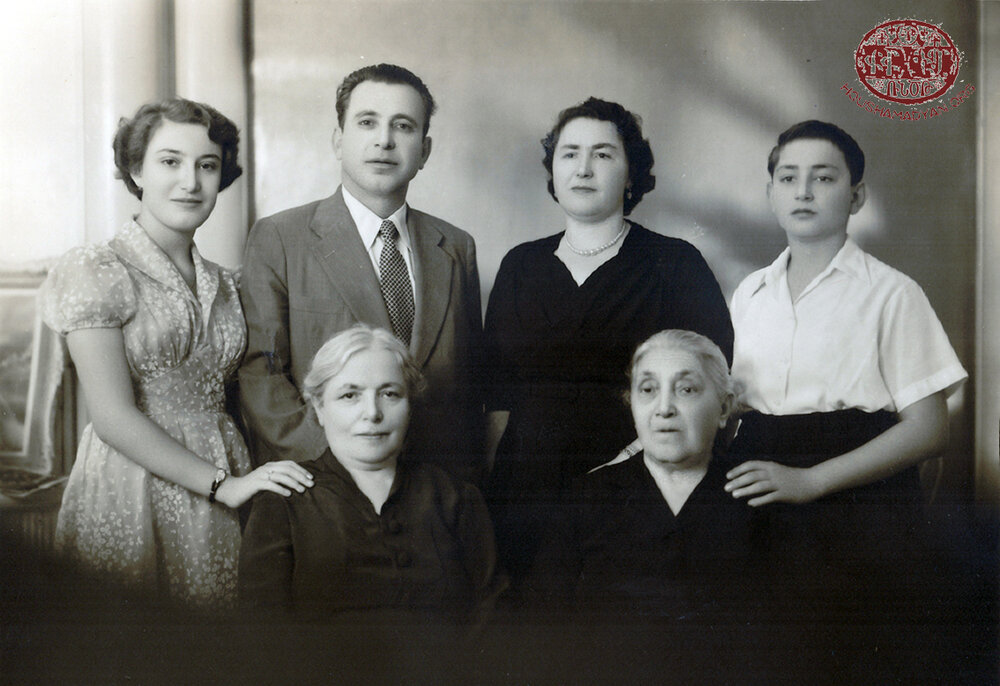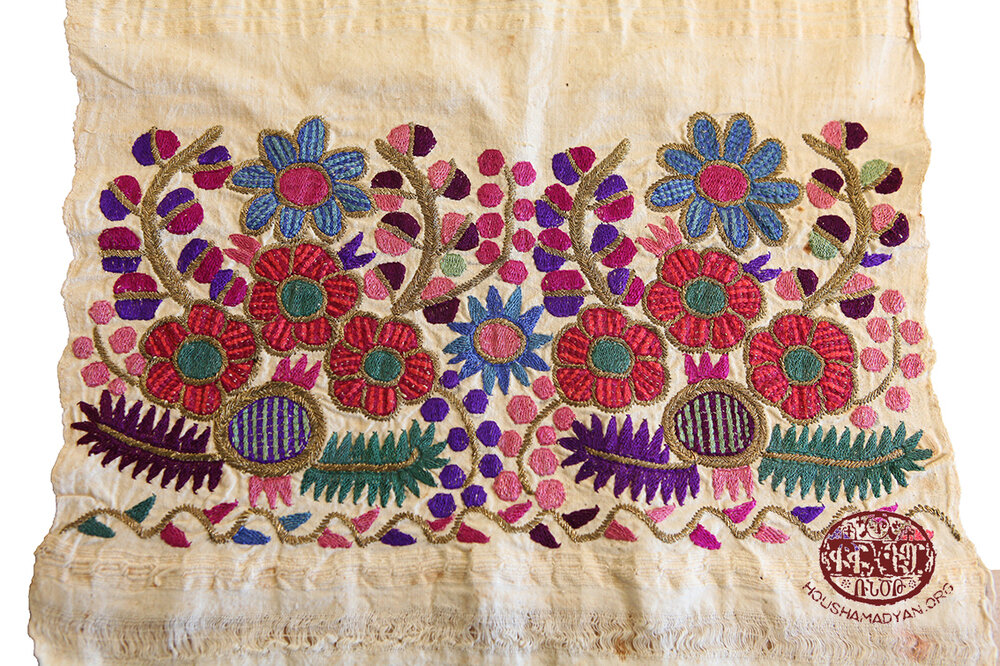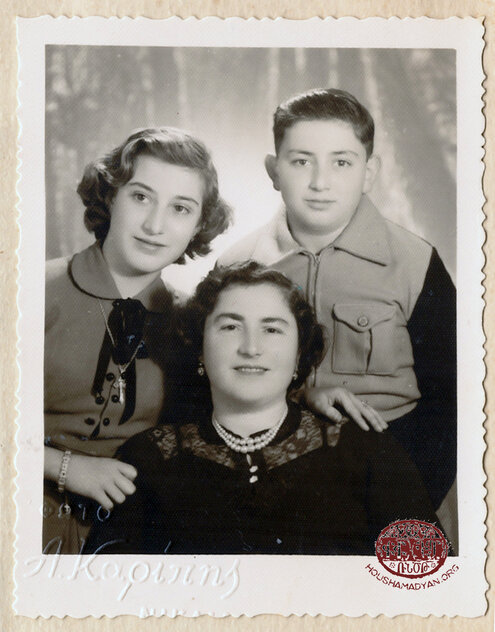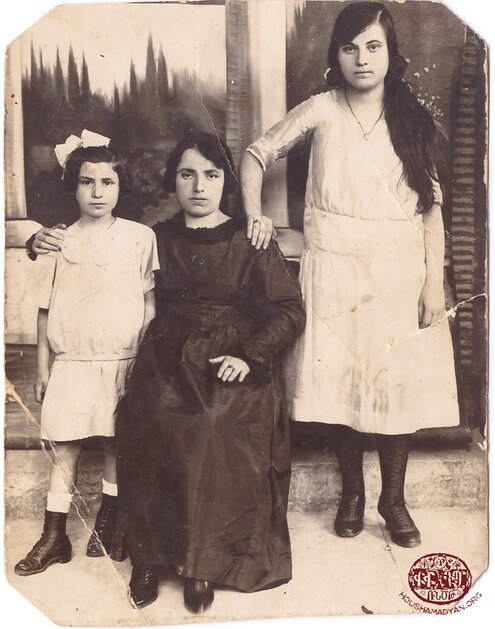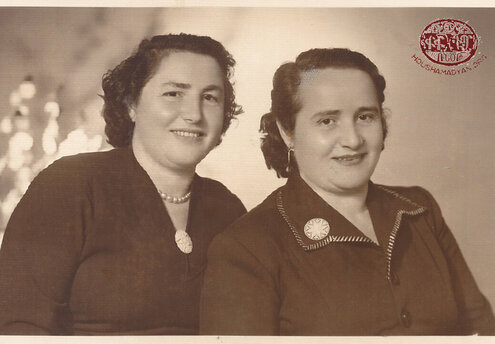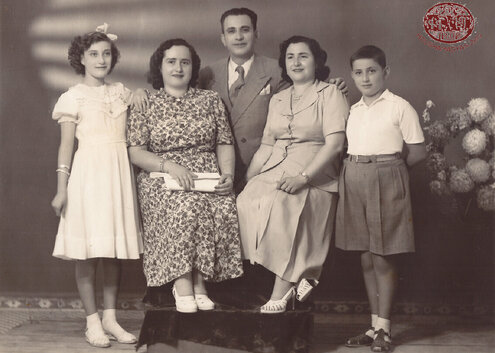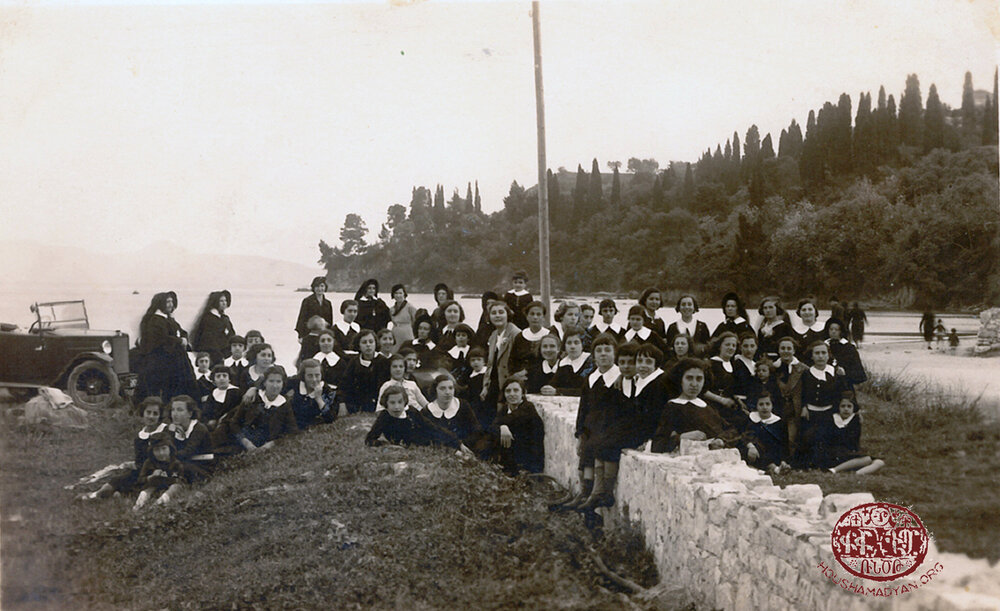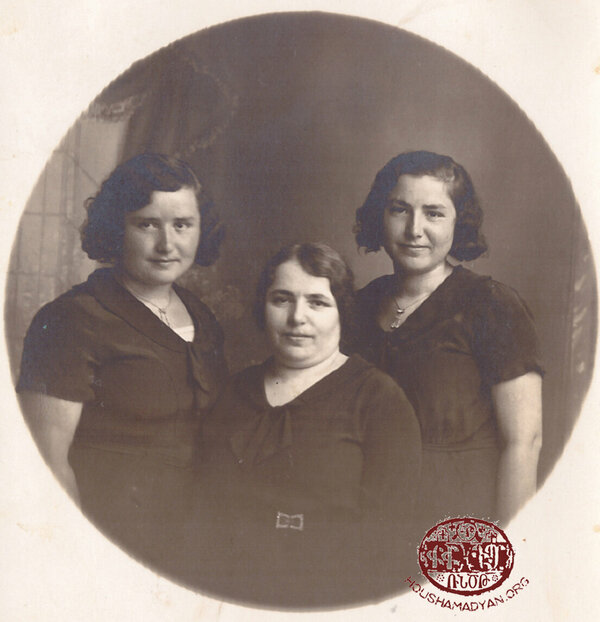Avakian Collection – Kokkinia (Nikaia), Greece
Author: Ani Apikian, 12/01/2024 (Last modified: 12/01/2024) - Translator: Simon Beugekian. This page was prepared collaboratively with the “Armenika” periodical of Athens.

The materials presented on this page were collected during a workshop organized by Houshamadyan in Kokkinia, Greece, on December 1, 2019. At the workshop, Liza Avakian shared her family’s history and collection of photographs with us. In November and December 2023, Ani Apigian, a member of the Houshamadyan team, met with Liza Avakian and her family again, to obtain additional information and digitize additional materials. This page is the result of these efforts, and is presented in collaboration with the Armenika periodical of Athens and the Greece chapter of the Hamazkayin Armenian Educational and Cultural Society.

The Der Artinian Branch (Marash)
Liza Avakian’s paternal grandfather, Hampartsoum Der Haroutyunian, was born in Marash. Hampartsoum was a comb maker by trade, and was often called darakdji (darak is Turkish for “comb”).
In 1915, when the massacres and deportations of the area’s Armenian population began, Hampartsoum, his wife, and their two children were deported from Marash. During the years of the Genocide, Hampartsoum’s wife and one of his children were killed. It was also during these years that Hampartsoum met Maryam (maiden surname unknown). At the first possible opportunity, the two married. This was also Maryam’s second marriage. Her first husband and two children had been killed during the Genocide. Maryam and Hampartsoum had two children, Vartan (born in 1922) and Ovsanna (born circa 1928). Vartan was Liza Avakian’s father.
Hampartsoum’s second child from his first marriage, who was lost during the years of Genocide, reappeared many years later in Armenia. This child (whose name remains unknown) established contact with Maryam and Hampartsoum’s daughter, Ovsanna.
We do not know the details of Hampartsoum and Maryam’s journey after the end of the First World War. We know that some of Maryam’s relatives settled in Aleppo, while she and Hampartsoum reached Greece in 1922 and settled in Kokkinia. At the time, their first son, Vartan, was a month-and-a-half old infant. In Kokkinia, Maryam was a homemaker, and Hampartsoum was a cobbler and leather merchant.
In Greece, Vartan Der Artinian attended the Saint Paul Greco-French school. He was a brilliant student, but he was forced to abandon his studies to help his father in his business, especially as by then, Hampartsoum was 77 years old. Maryam died suddenly in 1948.

The Keheyan Branch (Adana)
Liza’s maternal grandmother was Lousadzin Keheyan (nee Soukiasian). She was born in Adana, in 1900. She was married to Sdepan Keheyan, born in Gemereg.
The Keheyan family owned a lumber mill in Gemereg. After the Genocide, Sdepan ended up in Adana. There, he met Lousadzin, who was 25 years his junior, and the two immediately married in 1921. Sdepan was Catholic, while Lousadzin was Apostolic.
In 1921, Sdepan and Lousadzin were among the wave of Armenians who left Cilicia in a mass exodus. They took a ship from the port of Mersin to Cyprus. There, Sdepan and Lousadzin lived comfortably with their savings.
In 1922, their first child, Takouhi, was born in Cyprus. In 1924, the entire family moved to Greece and settled in Kokkinia, where the couple’s four other children were born: Hagop, Mary (born in 1926; Liza’s mother), Eliz, and Haroutyun. Hagop and Elize died at the age of 18, the former from tuberculosis, and the latter from typhoid.
Sdepan opened a small shop on Kondili Street in Kokkinia, where he made and sold basdurma. He also sold tobacco. In Greece, the trade in cured meats was an occupation traditionally practiced by Armenians, and many refugees had chosen it. Liza Avakian remembers frequently visiting her grandfather’s shop to deliver warm milk to him. She was impressed by how dedicated he was to his craft. He loved his work and treated his customers with warmth and honesty.
Liza’s grandmother, Lousadzin, was raised in a Turkish-speaking environment in Adana. But she had also attended an Armenian elementary school in the city, and thus was fluent in both languages. Lousadzin spoke Armenian with her grandchildren. Liza remembers that Lousadzin would often tune into Turkish radio stations and listen to Turkish songs. When her grandchildren asked her why they were not allowed to listen to these Turkish broadcasts, Lousadzin would reply, “Yavroum [My dear], this is what we grew up with…”
Mary Keheyan (Sdepan and Lousadzin’s daughter) and Vartan Der Artinian (Hampartsoum and Maryam’s son) met each other at the Zavarian Armenian club in Kokkinia, and married in 1946. They had three children: Maryam, Liza, and Hampartsoum. Liza would later marry Kevork Avakian.

The Avakian Branch (Afyonkarahisar)
Kevork Avakian’s paternal grandfather was Nazar, and his paternal grandmother was Maryam. Both were natives of Afyonkarahisar. They had one son, Hagop (1900-1967), who was Kevork Avakian’s father.
Nazar Avakian was a saddler in Afyonkarahisar. He was killed during the Genocide. Hagop Avakian continued to practice his father’s occupation. After the end of the First World War, when the Greek army occupied the western parts of the Ottoman Empire, Hagop worked as a saddler for the Greek army.
In 1921, the Greek army began retreating as the Greco-Turkish war raged. Turkish troops soon occupied Afyonkarahisar. It is said that many Armenians sought refuge inside a church, but Turkish forces only allowed women and children to enter it. Hagop was a diminutive young man. He disguised himself as a woman and was able to enter the church. When it became clear that the Turkish soldiers intended to set the church on fire, Hagop had the ingenuity to build a ladder that allowed his fellow Armenians to escape.
These events fortified Hagop’s faith in God. Later, he would safely reach Greece. He settled in the Lipazma area, where he was a tanner. Later, he moved to Kokkinia.
Hagop married Takouhi Papazian.

The Papazian Branch (Afyonkarahisar)
Takouhi Papazian was the daughter of Setrag (her father) and Perouz (her mother). Setrag and Perouz were natives of Afyonkarahisar. They had two daughters, Filor and Takouhi. Perouz had a brother, called Hovsep.
The following episode from the family’s history is said to have occurred before the Izmir Catastrophe: one day in 1921, while Setrag sat at a coffee shop in Afyonkarahisar with Hagop (Perouz’s 14-year-old brother), Turkish forces rushed into the shop and began arresting all the Christian men there. Hagop was able to flee, but Setrag was arrested. A month later, Perouz was able to track down her husband – he had been forced into a labor battalion that was building roads. Perouz found the battalion and approached her husband as he worked. Seeing her, the despondent Setrag said: “You can’t do anything to help me. If you have any money, you can give it to me.” Perouz gave her husband one Ottoman pound. This would be their last encounter. Perouz never saw her husband again. Until the day she died, she lived in the hope of his return.
In September 1922, when Kemalist forces began massacring Christians in Smyrna, Perouz and her two daughters, Takouhi and Filor, were able to make their way to the city’s port and board a French ship, which took them to the Greek island of Corfu (Kerkyra).
In Corfu, Perouz built a new life for herself and her daughters. She had received her primary education at the German school of Smyrna, and as she spoke German, she easily found employment in the Bella Venezia hotel, where she worked as an attendant. Perouz also spared no efforts to ensure that her daughters received the best possible education. Filor and Takouhi attended a school in Corfu directed by nuns.
At the same time, Perouz tried to help the many refugees who had settled in Corfu. She collected leftover food from the hotel and distributed it to these refugees.
During the Second World War, when Greece was occupied by Nazi Germany, Perouz worked as an interpreter for the German occupation forces, assisting with the interrogation of prisoners. She stated that she saved many lives by mistranslating or omitting incriminating statements made by prisoners during interrogations.
After the end of the war, the Greek government honored Perouz in recognition of her work with Greek and Armenian refugees.
Takouhi Papazian later moved to Athens. There, she married Hagop Avakian. The couple had two children, Angel (born in 1939) and Kevork (born in 1940). Filor lived in Corfu and later married there. She had a daughter, whom she named Perouz, in memory of her mother.
